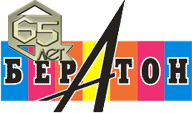What Is Python Coding and Why Is It So Popular?When you hear about Python coding, you’re stepping into a world built on clarity and flexibility. You're not just learning another language—you're adopting a tool that powers websites, analyzes data, and even drives artificial intelligence. People everywhere are drawn to Python’s straightforward style and vast community support. But what really sets Python apart from the crowd, and why are so many industries relying on it? The answer may surprise you. The Origins and Core Features of PythonPython, a programming language created by Guido van Rossum in 1991, derives its name from the television series "Monty Python's Flying Circus." It's characterized by its readable syntax, which promotes clarity and accessibility, making it user-friendly for both beginners and experienced developers. Python is an open-source language, allowing users to access, modify, and share its source code freely, thereby fostering a collaborative development environment. The language is equipped with a comprehensive standard library, which includes modules and functions that cater to a wide range of programming needs, from web development to data analysis. This extensive library can significantly reduce the time and effort required for coding by providing pre-built solutions for common tasks. Additionally, Python's cross-platform compatibility ensures that scripts can be executed across various operating systems, including Windows, macOS, and Linux. This flexibility contributes to its widespread adoption in diverse fields, making Python a practical choice for many developers and organizations. Major Applications and Industries Using PythonPython is a versatile programming language that's utilized across multiple industries and applications. Its frameworks, such as Django and Flask, are commonly employed in web development, facilitating both front-end and back-end processes. In the field of data science, libraries like pandas and NumPy enable developers to analyze and visualize large datasets effectively. The language is also prominent in machine learning, where libraries such as TensorFlow and PyTorch support the development of advanced artificial intelligence projects. Additionally, Python's capabilities extend to automating repetitive tasks, thereby improving workflow efficiency. This versatility has attracted a large community of developers who contribute to its ecosystem. Major organizations, including Google, Netflix, and Facebook, implement Python in various capacities across their operations, reflecting its significance in the current technological landscape. Key Factors Driving Python’s Widespread AdoptionPython's prominence across various industries can be attributed to several key factors that appeal to both developers and organizations. One notable aspect of Python is its simplicity and readability. These characteristics make the language accessible for newcomers, facilitating a quicker understanding of core programming concepts. This ease of use contributes to a lower barrier to entry for individuals looking to learn programming. Additionally, Python's versatility allows it to be utilized in multiple domains, including web development, data analysis, machine learning, and automation. This adaptability is a significant advantage, enabling developers to apply their skills in a variety of contexts without the need to master multiple programming languages. Community support plays a crucial role in Python's adoption. An active and engaged community contributes to a wealth of resources, libraries, and frameworks, which can enhance productivity and streamline development processes. The availability of these resources allows developers to find solutions to problems more efficiently, further supporting the language's widespread use. Moreover, Python's open-source nature fosters an environment of rapid growth and innovation. Developers can freely modify and distribute the language, leading to continuous improvements and the development of new features and tools. Finally, there's a growing demand for Python skills in technology-driven fields, making proficiency in this programming language a valuable asset for career advancement. As industries increasingly rely on technology and data analysis, the need for skilled Python developers is likely to persist, reinforcing the language's relevance in the tech landscape. Python’s Role in Modern Innovation and DevelopmentPython has established itself as a crucial tool in the current landscape of technology and innovation. Its versatility is evident in a range of applications, including artificial intelligence (AI), machine learning (ML), and data science. The language is supported by robust libraries, such as TensorFlow and PyTorch, which facilitate complex tasks in fields like natural language processing (NLP) and computer vision. Major corporations, including Google, Facebook, and Netflix, utilize Python for web development and rapid prototyping, highlighting its practical applications and efficient syntax. The language is also distinguished by its active community, which contributes to regular updates and enhancements, ensuring that developers have access to the latest advancements. The ongoing popularity of Python is reflected in its consistent ranking as one of the top programming languages globally, driven by its adaptability and the continuous evolution of technologies in which it plays a vital role. Getting Started With Python as a BeginnerPython is widely regarded as an accessible programming language for beginners due to its straightforward and readable syntax. Its design allows for a coding experience that closely resembles plain English, which can facilitate quicker comprehension and writing of code. A structured learning approach, such as a 30-day plan, can effectively aid learners in establishing fundamental programming skills. Many online resources provide tutorials that often include pre-built algorithms, which can assist beginners in understanding essential concepts more rapidly. Furthermore, platforms such as GitHub Codespaces offer users the opportunity to practice coding in a real development environment at no cost. Additionally, tools like GitHub Copilot leverage AI-driven suggestions to enhance the learning experience, allowing newcomers to receive guidance as they write code in Python. When learning Python, selecting appropriate resources and tools is important for effective skill development. Numerous options are available online, including algorithms, educational guides, and tutorials that cater to various levels of expertise. GitHub serves as a significant resource, offering Codespaces, which provide 60 hours of free coding per month, along with quick-start templates for popular frameworks such as Django and comprehensive documentation. GitHub Copilot is another tool that can assist in programming by providing AI-generated code suggestions, which may contribute to more efficient coding practices. Additionally, the official Python documentation is an essential resource for learners due to its accuracy and depth. Utilizing these resources can facilitate the development of practical Python programming skills. ConclusionAs you’ve seen, Python coding opens doors to endless possibilities across industries. Its simple syntax, massive libraries, and supportive community make it easier than ever to start your programming journey. Whether you’re building web apps, analyzing data, or diving into machine learning, Python’s versatility and innovative spirit keep it at the forefront. If you’re ready to join millions of other users, now’s the perfect time to start exploring everything Python has to offer. |









